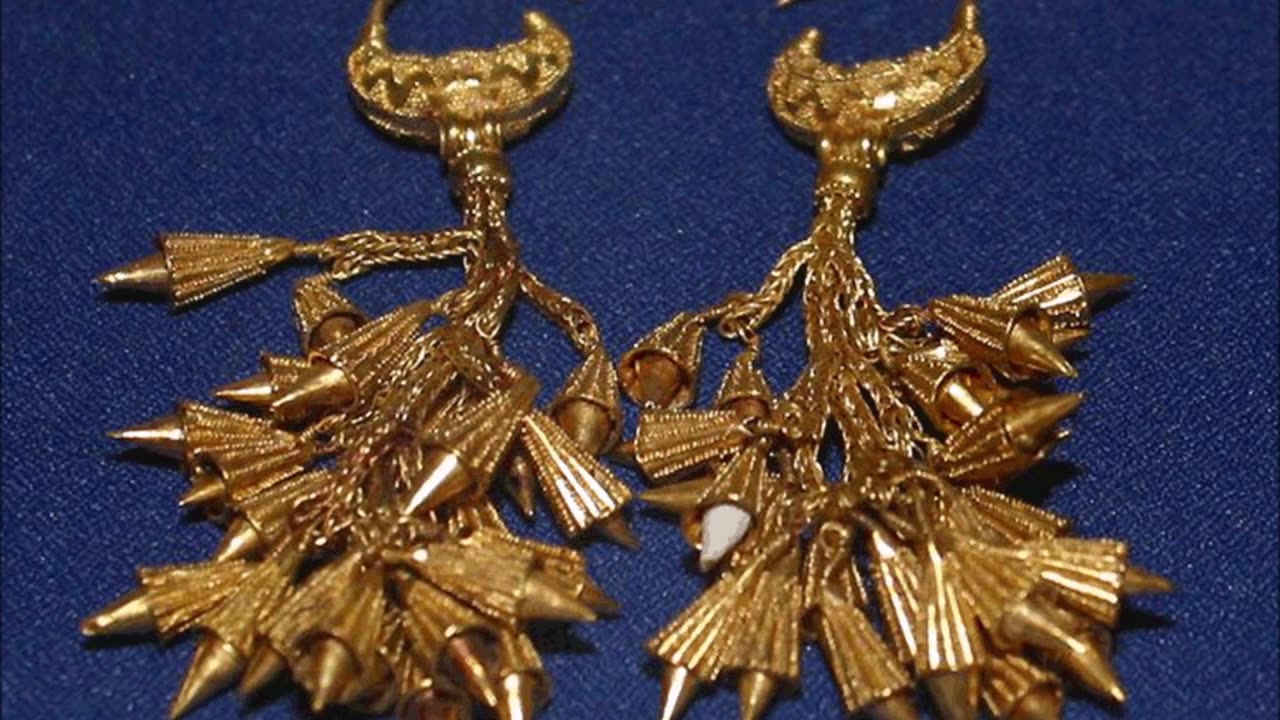Premium Only Content

The Treasures of Nimrod, Golden Treasures of Assyrian Queens (Kalḫu), the jewelry & Artifacts
It really shifted the comprehension we have had of who these Assyrians where, I mean, when you look at the writings on the walls and bas-reliefs from Nineveh and Nimrud, you also look at some of the parallel accounts from the bible. this is all about the portrait on a people who are extraordinary ferocious and orientated toward war and dominants, it is a real cultural maxima. But with these objects, you suddenly go "Wait a minute?" there are clearly an aesthetic dimension to the lived lives of these people. which has escaped the historical accounts! which is more about implying and demonstrating the bravado and macho of these people, propagandist sort of accounts that we have today, it require the refitting of our expectation of the nature of the Assyrian Culture, also very importantly it dose something that very, very happen in the ancient world, which is it provide us a window into the life of the women, now admittedly these are women of exceptional power, but nevertheless they're women, as we know all too often the history of the ancient world very much is told by male centered vision, (but) here we're looking at the material remains of very powerful women not the remains of powerful men, and there is something very refreshing about it: -
Yaba, Queen of Tiglathpileser III, king of Assyria 744-727
Banitu, Queen of Shalmanasser V, king of Assyria 726-722
Atalia, Queen of Sargon II, king of Assyria 721-705
-
 52:01
52:01
Tucker Carlson
8 hours agoNew York Mayor Eric Adams Sounds a Lot Like a Trump Voter
129K102 -
 2:47:25
2:47:25
Right Side Broadcasting Network
7 hours agoLIVE REPLAY: President Donald J. Trump Holds First Press Briefing Since Inauguration - 1/21/25
185K163 -
 DVR
DVR
vivafrei
6 hours agoD.C. Gulag Jan. 6 Prisoners Release Watch!
112K70 -
 1:49:14
1:49:14
Redacted News
5 hours agoTrump is Back! Congress Uncovers New Biden Crimes One Day After He Leaves D.C. | Redacted
126K188 -
 2:09:53
2:09:53
Benny Johnson
5 hours ago🚨President Trump LIVE Right Now Making MASSIVE Announcement At White House News Conference
215K235 -
 2:04:10
2:04:10
Revenge of the Cis
6 hours agoEpisode 1433: Retribution
82.9K13 -
 1:42:50
1:42:50
The Criminal Connection Podcast
10 hours ago $0.57 earnedEddie Hearn talks JOSHUA vs FURY, Working With Frank Warren & The Truth About Turki Alalshikh!
32.4K2 -
 1:00:25
1:00:25
In The Litter Box w/ Jewels & Catturd
1 day agoGolden Age | In the Litter Box w/ Jewels & Catturd – Ep. 724 – 1/21/2025
125K57 -
 57:42
57:42
The Dan Bongino Show
13 hours agoHE'S BACK! (Ep. 2405) - 01/21/2025
1.32M2.18K -
 46:19
46:19
Candace Show Podcast
7 hours agoUH-OH! Elon’s Viral Salute Steals The Inauguration Show | Candace Ep 136
136K363